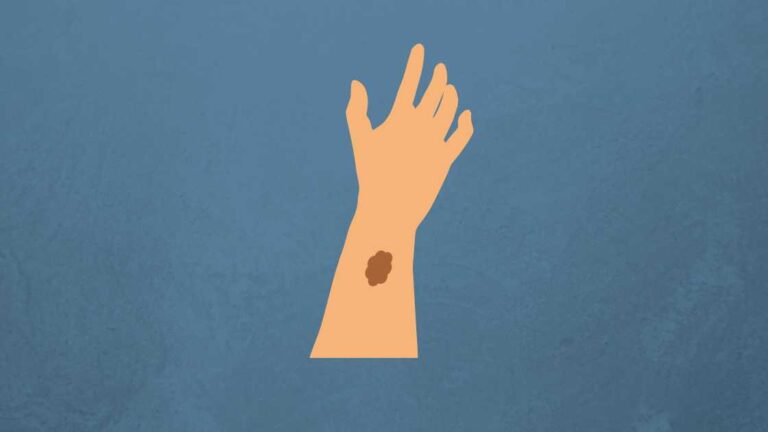Similar regions of your body are affected by muscle pain and bone pain. It could be challenging to distinguish between them as a result.
Following a strenuous workout or when you have the flu, you could experience muscle soreness or aches.
You might also get aches in your ankles, knees, or elbows due to arthritis or aging. However, compared to muscular pain, bone pain typically seems sharper, deeper, and more incapacitating.
Learn more about the many types of bone and muscle pain and how they differ by reading on.
Difference between bone pain and muscle pain
Compared to muscle pain, bone pain typically seems deeper, sharper, and more acute.
Bone pain is more concentrated and lasts longer than muscle pain, which also feels more diffuse across the body and usually subsides after a day or two.
Bone pain is always serious even though it is less frequent than joint or muscular pain.
There are a few key differences between bone pain and muscle pain. Bone pain is typically deeper and more constant, while muscle pain is typically sharper and more intermittent.
Bone pain is often caused by underlying medical conditions, while muscle pain is often caused by injury or overuse.
Finally, bone pain is typically felt in the bones themselves, while muscle pain is typically felt in the muscles.
How can I distinguish between the two?
To be able to distinguish between muscle pain and bone pain, you have to pay attention to the location of the pain.
You will typically feel bone in the bones themselves, while muscle pain will be typically felt in the muscles.
You should also consider the intensity and duration of the pain. If the pain is a deep, dull or aching but constant pain then it is likely to be bone pain.
Muscle pain, on the other hand, will present as intermittent pain which is sharp, stabbing, or throbbing in nature.
You should also consider what might be causing the pain. Muscle pain is commonly caused by overuse of the muscle or an injury to it. Bone pain, however, may be a result of an underlying medical condition.
More so, the impact of movement on the pain can give you some clues. If you feel the pain when the affected bone is moved, then it’s more bone pain.
In the same vein, if the pain worsens when the muscle involved is stretched or rubbed against, then it is muscle pain.
You should speak to a health professional to get a proper diagnosis of your pain and also identify any possible underlying cause while providing you with the best of treatment plans.
Typical Sources of Bone Pain
Osteoporosis
Osteoporosis is a bone disease that reduces bone mass and makes bones less dense. This typically occurs in older individuals.
Painful fractures, which can occur anywhere on the body but are most often in the hip, spine, and wrist, can result from the loss of bone strength.
Cancer
Bone pain may be a sign that cancer has migrated to your bones from another part of your body.
It might also be an indication of osteosarcoma, a type of cancer that originates in the bones.
The lengthy bones in the arms and legs are where this malignancy most frequently appears.
Movement might sometimes make the pain better and it frequently gets worse at night.
Injury
You may have a fractured or broken bone if you experience sudden, sharp bone pain. That may happen as a result of an unexpected trauma, such as a vehicle accident, slip and fall, or sports injury.
A stress fracture, a tiny split in your bone, is another possibility. These are frequently acquired by athletes who abuse their bodies.
Sickle cell disease
You don’t have enough healthy red blood cells to transport oxygen throughout your body if you have this inherited blood disorder.
Your bones can become damaged and experience excruciating pain due to a lack of oxygen.
Infection
Osteomyelitis is the medical term for a bone infection. When an infection from another part of the body spreads to the bone, it may result in this situation.
It can also begin inside the bone itself, frequently as a result of trauma.
Although osteomyelitis can afflict anyone at any age, it typically affects youngsters. Additionally, if you have sickle cell disease, your risk increases.
Broken bones (bone fractures)
When your bones fracture, they break or crack. Any bone in your body, from the tiniest to the largest and strongest, could experience this.
Depending on how they appear and affect the body, there are various types of fractures.
- Stress fracture: Fracture brought on by repeated motion, excessive use, or unwarranted strain.
- Non-displaced: Bone that has only minor fractures or cracks and does not separate
- Displaced: The bones partially or totally separate as a result of bone fracture or breakage.
- Open: The skin is torn and the protruding bone is visible.
- Closed: The skin still surrounds the shattered bone.
- Avulsion fracture: Bone chips brought on by a tendon ripping free
The majority of patients experience swelling or bruising where they were injured. The location may be extremely tender or painful, and they might have heard something that sounded like a crack during the incident that broke it.
However, occasionally people break bones and are unaware of it for a few days.
A doctor should be contacted if you recently suffered from any kind of physical trauma, including a fall, in order to rule out the chance of a fracture by performing an examination and, most likely, an x-ray.
Pregnancy
Pain in the pelvic bones is a typical pregnant symptom. Your doctor might refer to it as pelvic girdle pain associated with pregnancy (PPGP).
Treatment for bone pain
Your doctor will need to determine the underlying cause of the bone pain in order to choose an appropriate treatment.
While some types of bone pain may be chronic and require ongoing management, other types may go away completely after therapy.
Fractures, for example, may require the use of a cast or splint to be fixed. Rest, ice, and elevation are the primary treatments for stress fractures.
In order to help avoid fractures, your doctor may prescribe a mix of bone-building drugs, painkillers, lifestyle modifications, and fall prevention to manage bone pain brought on by osteoporosis.
Use over-the-counter painkillers such acetaminophen, aspirin, or ibuprofen to temporarily ease bone pain.
Usually, oral or intravenous antibiotics are needed to treat osteomyelitis.
Cancer-related discomfort can be exceedingly difficult to treat. Depending on the stage of your illness and the location of the cancer’s onset, your doctor will select a course of action.
Typically, oral or intravenous antibiotics are needed to treat osteomyelitis.
Cancer-related discomfort can be exceedingly difficult to treat. Depending on the stage of your illness and the location of the cancer’s onset, your doctor will select a course of action.
No matter what you believe to be the cause, it is crucial to contact a doctor if you experience any kind of severe bone pain.
Getting Rid of Bone Pain
The best method to avoid at least some types of bone pain, including those brought on by osteoporosis, is to maintain strong, healthy bones. For that, you ought to:
- keep a healthy weight.
- Increase your intake of calcium.
- Regular exercise is important, and weight-bearing exercise is especially important.
- Don’t smoke.
- Only drink in moderation.
Typical Sources of Muscle Pain
Muscle pain is more common than bone pain, and up to 55% of all sports injuries each year are caused by muscle strains.
Myalgia is another term for muscle pain and it encompasses all other tissues as well, such as tendons and ligaments in addition to muscles. There are various causes of muscle pain.
Fibromyalgia
Myalgia, or muscle pain, is a common symptom of this misdiagnosed condition, and it affects the entire body.
Women are diagnosed with it the most frequently; in fact, according to some studies, 90% of fibromyalgia patients are female. Usually, the discomfort has no known cause.
Another common sign of this condition is chronic weariness and headaches.
Despite the fact that there is no known cure for this condition, pain can be controlled using over-the-counter drugs and other treatments, such as chiropractic care for headaches.
Autoimmune Diseases
Although the symptoms of this category of illnesses vary, they are all the result of an overactive immune system, which produces immune cells that attack an individual’s own body, including their organs and muscles.
Some of the numerous potential symptoms include muscle soreness, sensitivity to touch, persistent fatigue or greater exhaustion with activity, and muscle weakening.
Muscle ache
A strain is one of the most frequent causes of muscle pain. Strains are different from sprains in that sprains typically involve the ligament, whereas strains refer to injuries to the soft tissue around the bone, including the muscle and tendon.
Strains are common among athletes and those whose jobs require a lot of repetitive motion, such as those that involve lifting heavy boxes all day. They may appear gradually or they may happen suddenly, as in the case of an injury.
You might also notice swelling, pain, a limited range of motion, and muscle weakness when a muscle strain manifests itself.
The RICE method—rest, ice, compression, and elevation—is the most effective remedy for muscle strain.
Muscle pain treatment
These actions could alleviate your symptoms, depending on the cause:
- Elevate the sore spot while you rest.
- Alternate between using heat and ice packs to reduce swelling and enhance blood flow.
- Take a warm shower or soak in an Epsom salt-filled bath.
- Utilize over-the-counter analgesics (aspirin, acetaminophen, ibuprofen, naproxen).
- Try supplementary treatments like massage, acupuncture, or meditation.
Preventing muscle pain
Take the following actions to reduce your likelihood of experiencing muscle pain in the future if your stress or physical activity-related pain is caused by your muscles:
- Prior to physical activity and after a workout, stretch your muscles.
- Include a five-minute warm-up and cool-down in each of your workout sessions.
- Keep yourself hydrated, especially if you’re active that day.
- Exercise frequently to help support ideal muscle tone.
- If you work at a desk or in an atmosphere that puts you at risk for muscle tension or strain, stand up often and stretch.
Summary
Because they both affect similar body areas, it can be challenging to distinguish between bone and muscle pain. The intensity of the pain might also be comparable.
However, compared to muscular pain, bone pain typically seems sharper, deeper, and more incapacitating.
Additionally, bone discomfort may persist longer than muscle pain and demand more medical treatment.
Muscle pain, on the other hand, feels more “generalized” and is more elusive in its precise place.







Leave a Comment